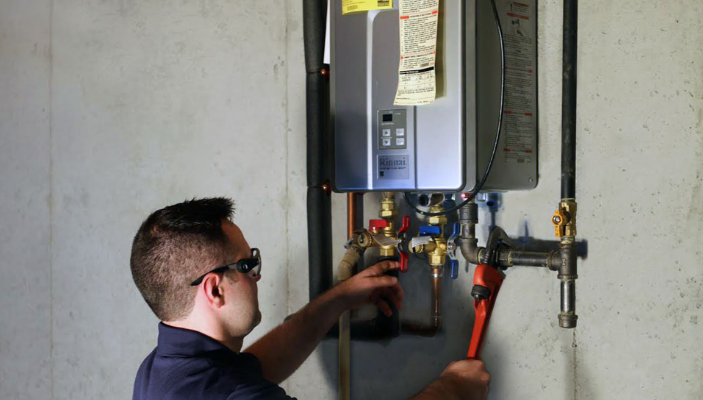Just how do you feel when it comes to Tips on Maintaining a Water Heater?

Hot water is necessary for daily convenience, whether it's for a rejuvenating shower or cleaning dishes. To ensure your warm water system runs efficiently and lasts longer, normal upkeep is key. This post provides useful pointers and insights on how to preserve your home's hot water system to stay clear of disruptions and expensive fixings.
Introduction
Maintaining your home's warm water system could seem complicated, but with a few basic actions, you can guarantee it operates smoothly for years to come. This overview covers every little thing from understanding your warm water system to DIY maintenance pointers and recognizing when to contact expert aid.
Importance of Keeping Your Warm Water System
Regular maintenance not only prolongs the life expectancy of your warm water system but also ensures it operates effectively. Disregarding upkeep can lead to reduced effectiveness, greater power costs, and even premature failure of the system.
Indications Your Hot Water System Demands Upkeep
Recognizing when your warm water system requires focus can protect against significant issues. Look out for signs such as inconsistent water temperature, strange noises from the heater, or rusty water.
Flushing the Water Heater
Purging your hot water heater gets rid of debris accumulation, enhancing effectiveness and lengthening its life.
Monitoring and Changing Anode Rods
Anode rods avoid corrosion inside the tank. Examining and replacing them when worn is important.
Complex Issues Calling For Specialist Assistance
Examples include significant leaks, electric issues, or if your water heater is regularly underperforming.
Routine Specialist Maintenance Advantages
Professional upkeep can consist of extensive evaluations, tune-ups, and ensuring conformity with security standards.
Checking and Adjusting Temperature Level Setups
Adjusting the temperature level settings ensures optimum efficiency and safety.
Do It Yourself Tips for Maintenance
You can perform numerous maintenance jobs yourself to keep your warm water system in top problem.
Checking for Leakages
On a regular basis examine pipelines and links for leaks, as these can bring about water damage and greater bills.
Recognizing Your Hot Water System
Prior to diving into maintenance tasks, it's valuable to understand the standard components of your warm water system. Usually, this consists of the water heater itself, pipes, anode rods, and temperature level controls.
Regular Monthly Maintenance Tasks
Normal monthly checks can aid catch minor concerns prior to they escalate.
Testing Stress Relief Valves
Testing the pressure safety valve guarantees it functions properly and prevents extreme stress buildup.
Shielding Pipes
Protecting hot water pipes lowers heat loss and can conserve power.
When to Call a Professional
While DIY upkeep is useful, some concerns require expert expertise.
Final thought
Normal upkeep of your home's hot water system is crucial for efficiency, durability, and expense financial savings. By adhering to these tips and understanding when to look for professional help, you can make sure a trusted supply of hot water without unexpected interruptions.
How to Maintain an Instant Hot Water Heater
Before tinkering with your hot water heater, make sure that it’s not powered on. You also have to turn off the main circuit breaker and shut off the main gas line to prevent accidents. Also turn off the water valves connected to your unit to prevent water from flowing into and out of the appliance. 2. When you’re done, you have to detach the purge valves’ caps. These look like the letter “T†and are situated on either side of the water valves. Doing so will release any pressure that has accumulated inside the valves while at the same time avoid hot water from shooting out and burning your skin. 3. When the purge valves’ caps are removed, you have to connect your hosing lines to the valves. Your unit should have come with three hoses but if it didn’t, you can purchase these things from any hardware or home repair shops. You can also get them from retail stores that sell water heating systems. Read the user’s manual and follow it to complete this task properly. When the hosing lines are connected, open the purge port’s valves. 4. You should never use harsh chemical cleaners or solutions when cleaning your unit. Make use of white vinegar instead. It should be undiluted and you’ll probably use about 2 gallons. 5. Now flush your water heater. This task should probably take about 40 minutes. We can’t give you specific directions for this because the procedure is carried out depending on the type, model and brand of your heater. With that being said, refer to the user’s manual. 6. When you’re done draining the unit, you have to turn off the purge port valves again. Remove the hosing lines that you earlier installed on each of the water valves. Put the valve caps (purge port) back in their respective places and be very careful so as not to damage the rubber discs that are found inside these caps. 7. Now that everything’s back in place, check your user’s manual again to find out how to reactivate your water heating system. 8. Once it is working, turn one of your hot water faucets on just to let air pass through the heater’s water supply pipes. Leave the tap on until water flows smoothly out of it. https://www.orrplumbing.com/blog/2014/september/how-to-maintain-an-instant-hot-water-heater/

Do you enjoy reading up on Tips on Maintaining a Water Heater? Write a review further down. We will be delighted to hear your ideas about this write up. In hopes that you visit us again later on. Those who enjoyed our post kindly consider to pass it around. Thank you for taking the time to read it.
Call Today